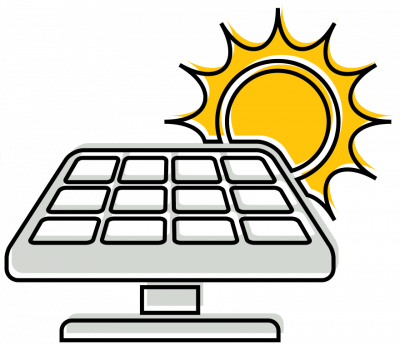Solar Power
Solar power is generated when special panels of solar cells, or modules, capture sunlight and convert it directly into electricity. These panels are known as photovoltaic, or PV. (“Photo” is Greek for light, and “voltaic” pertains to electricity.)
Several PV panels can be grouped into solar arrays, and large numbers of these used to create a solar power plant. The electricity produced by solar panels can be used right away, fed into the power grid for others to use, or stored in a battery so it is also available on cloudy days.
Solar thin films are light-absorbing materials that are rolled, sprayed, or painted onto rooftops and other surfaces. Thin films are cheaper to make than traditional solar cells, but they are not yet as efficient at producing electricity.
Thermal solar power uses mirrors or panels containing tiny tubes filled with water that absorb heat from the sun. On rooftops, they can supply hot water for individual buildings. Concentrated solar power can also be used to create steam that spins turbines at electric power plants.


